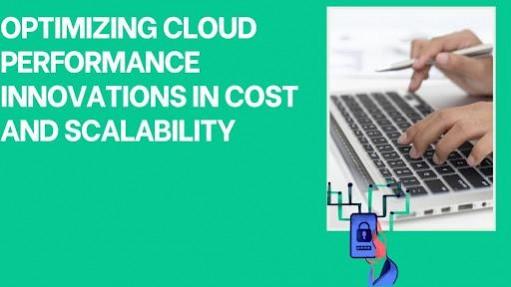
Cloud computing has transformed how businesses operate, offering dynamic scalability and cost efficiencies. In his insightful work, Karthikeyan Rajamani explores the crucial balance between cost optimization and scalability in cloud architectures. This article delves into key innovations that are shaping the future of cloud computing.
Smarter Cost Optimization Strategies
Effective cloud cost optimization is essential for businesses aiming to maximize performance without overspending. One of the primary methods involves right-sizing instances, ensuring computing resources match the specific needs of applications. This eliminates waste from over-provisioning while preventing underperformance due to resource constraints.
Autoscaling is another key innovation, allowing cloud systems to dynamically adjust resources based on demand. By automatically scaling up or down, businesses can avoid unnecessary expenses during low-traffic periods while ensuring sufficient capacity during peak times.
Adopting open-source operating systems also contributes to cost reduction. Open-source platforms, such as Linux, provide robust performance without the high licensing fees associated with proprietary solutions, making them an attractive option for enterprises seeking efficiency.
Leveraging Serverless Computing
A significant leap in cloud technology is the rise of serverless computing, which allows applications to run without the need to manage infrastructure. In this model, businesses only pay for actual computing time, reducing unnecessary expenses. This approach is particularly effective for applications with unpredictable workloads, as it scales instantly based on demand.
Containerization further enhances cloud efficiency by providing lightweight, isolated environments for applications. Containers enable rapid deployment and efficient resource utilization, making them ideal for businesses looking to streamline operations without incurring excessive infrastructure costs.
Scalability through Advanced Architectures
Ensuring that cloud applications can handle fluctuating workloads is a critical challenge. There are two primary approaches to scalability: horizontal scaling, which adds more machines to distribute workload, and vertical scaling, which enhances the capability of existing machines. The choice between these methods depends on application requirements, but both contribute to improved performance and resilience.
Cloud providers now offer auto-scaling groups that adjust computing resources in real time. This automation ensures that applications remain responsive without human intervention, optimizing both performance and expenditure.
Harnessing Container Orchestration
With the widespread adoption of container orchestration tools, businesses can automate the management of containerized applications. Platforms like Kubernetes facilitate load balancing, self-healing, and seamless scaling, making it easier to maintain efficiency across complex cloud environments.
Event-driven architectures are also gaining traction, allowing applications to scale in response to specific triggers. By processing workloads dynamically based on events, businesses can optimize resource allocation while maintaining responsiveness.
Achieving the Right Balance
Balancing cost efficiency with scalability requires a strategic approach. Implementing comprehensive monitoring tools helps organizations track cloud usage and identify areas for improvement. Additionally, a multi-cloud strategy leveraging multiple cloud providers—ensures flexibility and cost savings by allowing businesses to select the best-priced services for specific tasks.
Automation plays a key role in maintaining efficiency. Policies such as automated instance right-sizing and scheduled shutdowns for non-essential resources contribute to significant cost reductions without compromising performance.
Future Trends in Cloud Optimization
As cloud technology continues to evolve, several emerging trends are shaping its future. Edge computing is gaining prominence by processing data closer to its source, reducing latency and enhancing efficiency. Meanwhile, AI-driven cloud management enables intelligent automation of resource allocation, ensuring optimal cost savings and scalability.
In conclusion,Optimizing cloud costs while ensuring scalability is an ongoing challenge that requires continuous innovation. As outlined in this discussion, leveraging strategies like autoscaling, serverless computing, and container orchestration enables businesses to build resilient, As technology advances, companies that embrace these innovations will stay ahead in the ever-evolving digital landscape. Karthikeyan Rajamani's work provides valuable insights into these strategies, equipping businesses with the knowledge to navigate the complexities of modern cloud computing.

















